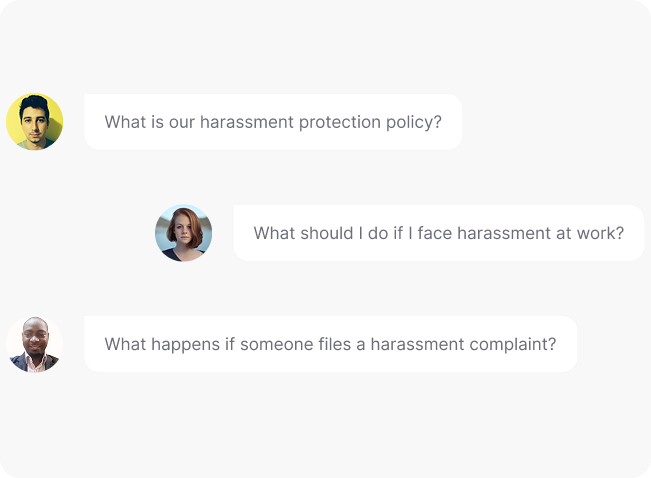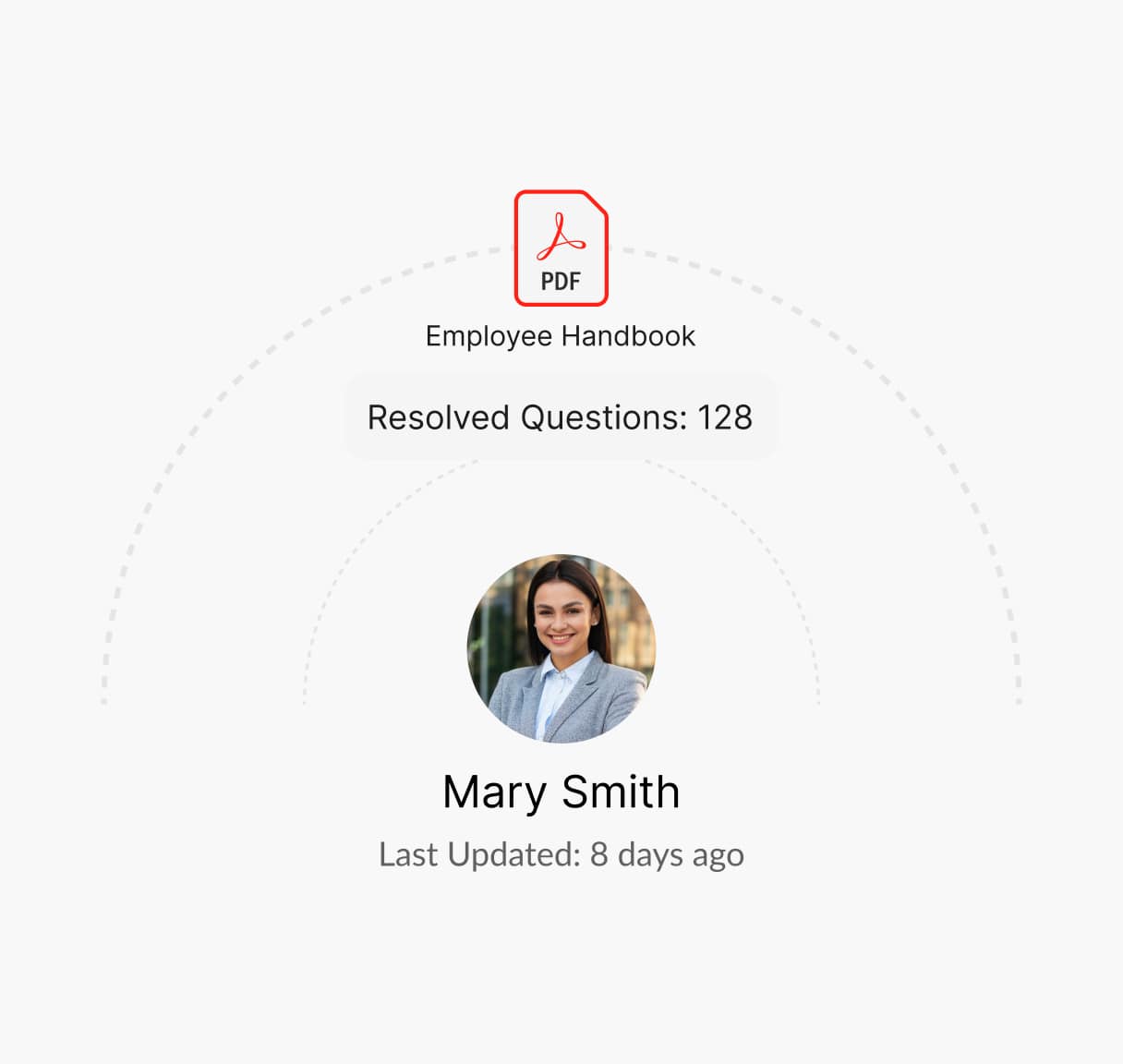Everything You Need to Know About Harassment Protection Policy
Creating a safe and inclusive workplace starts with proactive prevention. A comprehensive Harassment Protection Policy outlines clear procedures, ensuring swift resolution and reinforcing a culture of respect.

What is a Harassment Protection Policy?
A Harassment Protection Policy is a critical HR document that defines unacceptable behaviors—such as sexual harassment, bullying, and discrimination—and establishes protocols for reporting, investigating, and resolving complaints.
It ensures compliance with Equal Employment Opportunity (EEO) laws and fosters a workplace culture rooted in respect, safety, and inclusion. The policy outlines protections for employees, details consequences for violations, and encourages a zero-tolerance approach to harassment. By providing clear, actionable steps, a strong harassment protection policy not only mitigates legal risks but also supports employee well-being and organizational integrity.
Guidelines for Creating a Harassment Protection Policy
A strong Harassment Protection Policy fosters a safe and respectful work environment. Here’s how to create one:
State the Organization’s Zero-Tolerance Commitment
Begin by emphasizing the organization’s commitment to preventing all forms of harassment, including sexual, verbal, physical, and discriminatory harassment, with a strict zero-tolerance stance.
Define What Constitutes Harassment
Clearly define the behaviors that constitute harassment, including examples of verbal, physical, and visual harassment, as well as any harassment based on protected characteristics such as race, gender, religion, or disability.
Establish Reporting Mechanisms
Outline clear, confidential channels for employees to report harassment, ensuring they feel safe and protected from retaliation. Include both internal and external reporting options, such as HR, managers, or third-party helplines.
Describe the Investigation Process
Detail the process for handling harassment claims, emphasizing fairness, impartiality, and thoroughness. Provide timelines for addressing complaints and state how investigators will ensure confidentiality and non-retaliation during the process.
List Consequences for Violations
Specify the potential disciplinary actions for those found guilty of harassment, ranging from counseling and training to suspension or termination, depending on the severity of the offense.
Include Prevention Strategies
Provide proactive measures to prevent harassment, such as regular training on harassment awareness, respectful communication, and bystander intervention techniques. This demonstrates a proactive approach to fostering a harassment-free culture.
What is Covered in a Harassment Protection Policy?
An effective harassment protection should include the following:
Zero-Tolerance Commitment
A declaration that the organization has a strict zero-tolerance policy towards all forms of harassment in the workplace.
Protected Classes and Behaviors
List of protected characteristics (e.g., race, gender, age, sexual orientation) and the types of behavior that are prohibited (e.g., verbal, physical, sexual harassment).
Scope and Application
Explanation of how the policy applies to all employees, contractors, visitors, and clients, covering all workplace interactions and environments, including in-person and digital.
Reporting Procedures
Steps employees should take to report harassment, including designated reporting channels (HR, managers, external helplines) and guarantees of confidentiality.
Investigation Process
A transparent process for how harassment complaints will be investigated, ensuring fairness, impartiality, and non-retaliation for complainants.
Consequences for Violations
A clear outline of the disciplinary actions that will be taken against employees found guilty of harassment, ranging from counseling to termination, depending on the severity of the offense.
Training and Awareness
Programs to educate employees about harassment prevention, bystander intervention, and fostering a respectful workplace culture.
Legal Compliance
References to applicable harassment laws, including Title VII of the Civil Rights Act, the Equal Employment Opportunity Commission (EEOC) guidelines, and other relevant regulations.
Need help creating a harassment protection?
How Winslow Helps HR Teams Streamline Harassment Protection Policy Management
Creating a safe, respectful workplace requires clear communication and accessibility of harassment protection policies. Winslow simplifies this process:

Instant answers anytime
Winslow makes your harassment protection policy easily accessible through platforms like Slack, Teams, or email, allowing employees to access reporting procedures and details about prohibited behaviors at any time.
Personalized Support
Winslow provides instant answers to all HR questions, including those about your Harassment Protection Policy, ensuring clarity on reporting procedures and employee rights.


Analytics and Insights
Winslow tracks policy-related queries, helping HR teams identify trends and common concerns. This data enables organizations to refine their policy, improve reporting channels, and address recurring issues proactively.
Streamline Harassment Protection in your Organization with Winslow
With Winslow, HR teams can ensure quick responses to harassment protection queries, helping reinforce a respectful work environment. Winslow’s AI solutions boost workplace safety, enhance compliance, and promote an inclusive culture.
Frequently asked questions
Have further questions about Winslow, contact us at sales@usewinslow.com
What are the key components of an effective harassment protection policy?
An effective policy should define harassment, outline acceptable and unacceptable behaviors, establish clear reporting procedures, and identify consequences for violations. It should also include a non-retaliation clause to protect employees who report harassment.
How can HR ensure that employees are aware of and understand the harassment protection policy?
HR should regularly communicate the policy through training, orientation, and visible postings around the workplace. Employees should be encouraged to ask questions, and periodic refresher courses should be provided to ensure continuous awareness.
What procedures should HR follow when a harassment complaint is filed?
HR should investigate the complaint promptly, maintaining confidentiality and fairness throughout the process. HR must document the investigation steps, involve relevant parties (witnesses, the accused, etc.), and take appropriate action based on the findings, which could include disciplinary measures or mediation.
How can HR create a culture that actively prevents harassment in the workplace?
HR can foster a respectful workplace by promoting inclusion, providing training on appropriate workplace behavior, encouraging open communication, and modeling anti-harassment practices. A proactive approach can prevent incidents and create a safer environment for all employees.
What training programs are recommended to educate employees about harassment and prevention?
HR should offer regular, interactive training on harassment prevention, bystander intervention, and respectful workplace behavior. Training should be tailored to different roles and include real-life scenarios, with a focus on creating a supportive and inclusive culture.
Additional resources
Device Usage Policy
Managing employee leave effectively is vital for maintaining workforce productivity and compliance....
Learn moreconfidentiality policy
Protecting sensitive information is crucial. A clear Confidentiality Policy outlines guidelines for...
Learn moreclaim reimbursement
Ensuring fair compensation for expenses is key. A clear Claim Reimbursement Policy...
Learn more




